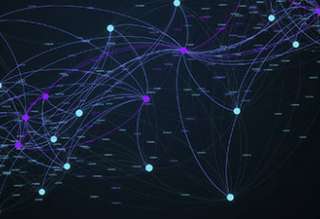SPS Feed
Top Reasons to Join SPS Today!
1. IEEE Signal Processing Magazine
2. Signal Processing Digital Library*
3. Inside Signal Processing Newsletter
4. SPS Resource Center
5. Career advancement & recognition
6. Discounts on conferences and publications
7. Professional networking
8. Communities for students, young professionals, and women
9. Volunteer opportunities
10. Coming soon! PDH/CEU credits
Click here to learn more.
The Latest News, Articles, and Events in Signal Processing

We have multiple openings for PhD students, Postdoctoral Researchers and R&D Engineers at Télécom Paris, Institut polytechnique de Paris, in the “Signal, Statistics and Learning (S2A) team.
All positions are located at Telecom Paris, 19 place Marguerite Perey, 91120 Palaiseau, France.
Start of the positions: October/November 2022 (for PhDs/Engineer), January 2023 for PostDoc
Subject:
Date: December 9, 2021
Time: 11:00 AM ET (New York Time)
Title: Scaling and Scalability: Accelerating Ill-conditioned Low-rank Estimation via Scaled Gradient Descent
Registration | Full webinar details
Date: December 10, 2021
Time: 10:00 AM ET (New York Time)
Title: Image Fusion with Convolutional Sparse Representation
Registration | Full webinar details
Date: December 20, 2021
Time: 8:00 AM ET (New York Time)
Title: Infinite-Dimensional Expansion for Sound Field Estimation with Application to Spatial Audio
Registration | Full webinar details
Date: December 8, 2021
Time: 08:20 AM ET (New York Time)
Title: Is Machine Learning Security IFS-Business as Usual?
Registration | Full webinar details
Date: January 26, 2022
Time: 9:00 AM ET (New York Time)
Title: Bayesian Multi-object Tracking: Probability Hypothesis Density Filter and Beyond
Registration | Full webinar details
Date: February 24, 2022
Time: 11:00 AM ET (New York Time)
Title: Recent Advances of Deep Learning within X-ray Security Imaging
Registration | Full webinar details
Date: January 27, 2022
Time: 10:00 AM ET (New York Time)
Title: Signal Processing for THz Communications
Registration | Full webinar details
Date: February 17, 2022
Time: 3:00 PM (Paris Time)
Title: Revisiting MIMO from a Circuits Perspective
Registration | Full webinar details
Date: February 24, 2022
Time: 10:00 AM ET (New York Time)
Title: Massive MIMO Systems with One-bit Spatial Sigma-Delta ADCs
Registration | Full webinar details
Date: March 25, 2022
Time: 9:00 AM ET (New York Time)
Title: Fractional Programming for Communication Systems
Registration | Full webinar details
Date: April 12, 2022
Time: 9:00 AM ET (New York Time)
Title: Model-Driven Deep Learning for MIMO Detection
Registration | Full webinar details
Date: March 31, 2022
Time: 10:00 AM ET (New York Time)
Title: Revisiting MIMO from a Circuits Perspective
Registration | Full webinar details
Date: May 4, 2022
Time: 8:00 AM EDT (New York Time)
Presenters: Dr. Christos Masouros, Dr. Fan Liu, Dr. J. Andrew Zhang
Pages
SPS Social Media
- IEEE SPS Facebook Page https://www.facebook.com/ieeeSPS
- IEEE SPS X Page https://x.com/IEEEsps
- IEEE SPS Instagram Page https://www.instagram.com/ieeesps/?hl=en
- IEEE SPS LinkedIn Page https://www.linkedin.com/company/ieeesps/
- IEEE SPS YouTube Channel https://www.youtube.com/ieeeSPS













